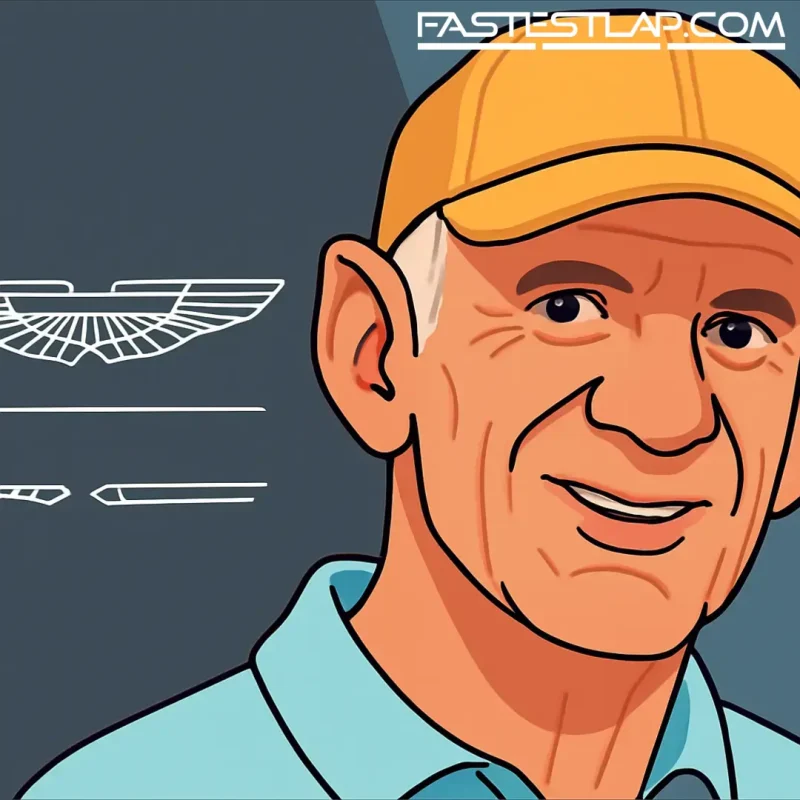Adrian Newey in green. Honda on the cam covers. Aston Martin, at last, building a car around its own heartbeat. That’s the picture forming as the team transitions from Mercedes customer to full works outfit for 2026 — and the mood inside Silverstone is unmistakably bullish.
Newey, installed as managing technical partner in March, has dived straight into the 2026 project. The timing is no accident. The new rules swing a wrecking ball through established pecking orders, and Aston Martin wants to be the team that catches the bricks. Having Honda in-house changes the conversation from “What can we fit?” to “What should we build?”
Andy Cowell, Aston Martin’s CEO and team principal, has been hands-on with the Honda tie-up. Speaking ahead of Singapore, he painted a picture of two engineering-first organisations locking in quickly.
“Honda’s going great,” Cowell said. “They’re an engineering-led organisation, just like Aston Martin. They’re innovative, their sense of passion and commitment and courage is huge. I’m flying to Sakura on Monday, spending a couple of days with them after the race.”
The difference between a customer team and a works one shows up in the millimetres nobody sees. Those early debates — the front face of the power unit, the cooling architecture, how the engine and transmission meet, and how the aero package wraps around it — will decide who hits the ground running. Cowell didn’t hide how useful Newey’s Honda history has been already.
“I guess that’s where Adrian being on board since March is really helpful. He’s got experience working with Honda, so there’s a natural understanding there already as to what can be pushed and what can’t. So yeah, exciting times.”
We’ve seen what that understanding can yield. Newey’s Honda-powered Red Bulls ripped through the sport, underpinning Max Verstappen’s four consecutive Drivers’ crowns from 2021–24 and Red Bull’s 2022–23 Constructors’ titles. The shapes may change under the 2026 regs, but the principles — elegant packaging, ruthless efficiency, clean aero — carry across.
The regs themselves are a fundamental reset. Engines become hybrid-plus: more than double the electrical deployment, sustainable fuels in the V6, and a renewed battery game that will punish inefficiency. On the chassis side, the cars should drop around 30kg, with active aero front and rear and the end of DRS as we know it. Pirelli will slim the tyres — narrower front and rear — which, combined with the aero shift, should change the way drivers lean on the car mid-corner.
All of that makes integration the performance frontier. Marrying the power unit’s cooling and energy needs with a slim, stable aero platform is where works teams usually make their money. That’s the bet Aston Martin is making by bringing Honda into the building — and by giving Newey the freedom to set the architecture, not just sketch the bodywork.
There’s also the clock. Pre-season will come quickly, with the usual factory shutdown creating a hard pause just when you’d love another week on the dyno or in CFD. Nobody can move testing or the first race, and everyone knows the early months of a new rules cycle are unforgiving. If you miss, you chase.
“Yeah, it’s a big challenge for all the teams,” Cowell said. “Lots of new technology – power unit, advanced sustainable fuels, aerodynamics, materials development, chassis design, transmissions. It’s the whole car. And it’s exciting. None of us can move that first test date or the first race date. We’re all pushing as hard as we can to innovate and create performance. But we all know that you don’t get any points unless you finish, and we’ve got that eternal balance to make.”
That balance is the tightrope Aston Martin didn’t always walk in 2024, when early-season promise softened under development pressure. The difference now is structural: a works engine, a blank-sheet car, and arguably the most successful designer of the modern era orchestrating the package. It won’t guarantee lap time, but it raises the ceiling.
There’s a quiet confidence around Silverstone that the first Aston Martin-Honda will be a tidy, tightly packaged machine with sharp low-drag efficiency — very much a Newey fingerprint. If the integration clicks, the team has the driver line-up and the facility to convert it. If it doesn’t, there’s nowhere to hide in a ruleset that punishes compromise.
The coming winter will show how far along they really are. Until then, the headline is simple: Aston Martin finally controls the core. And Adrian Newey is drawing the lines. That’s usually when things get interesting.




